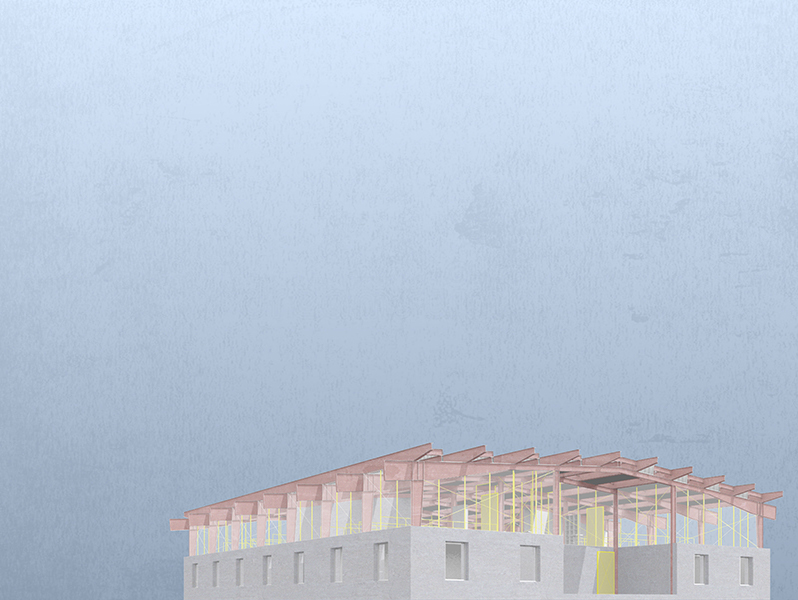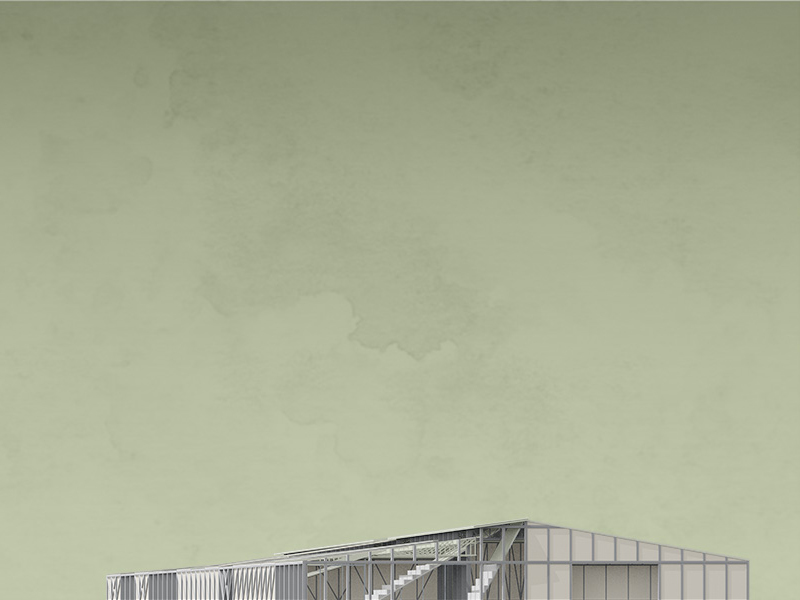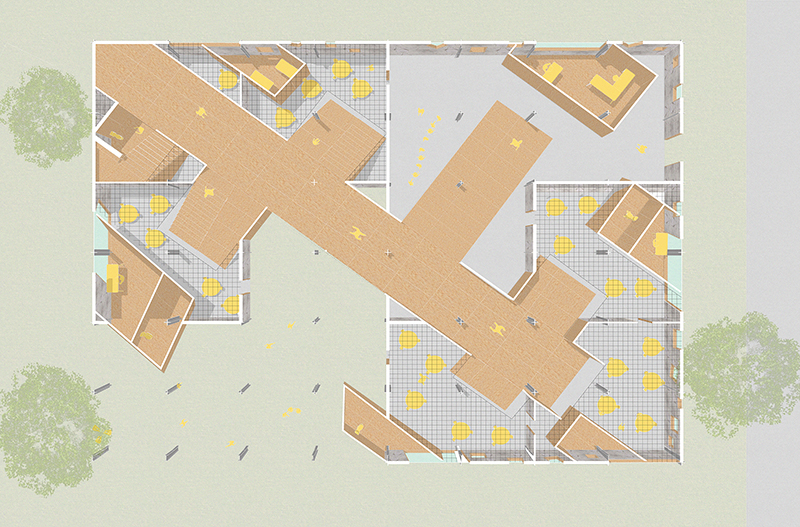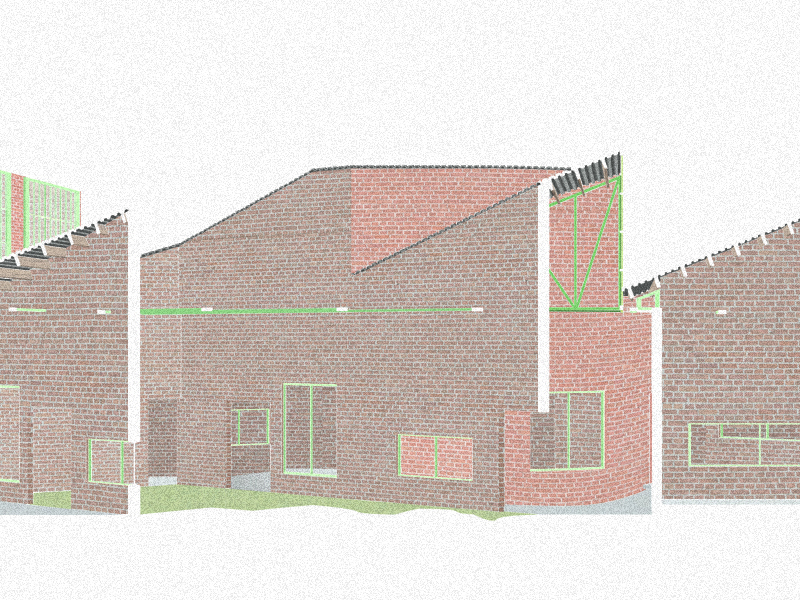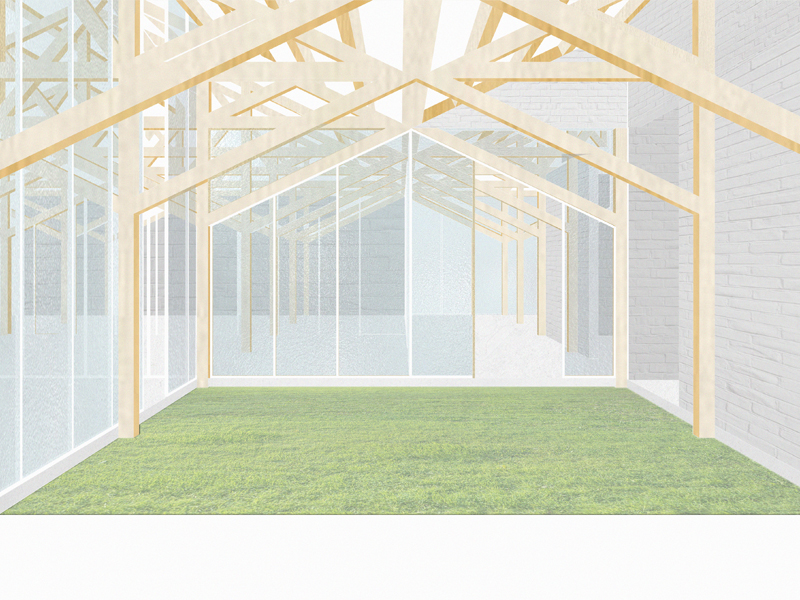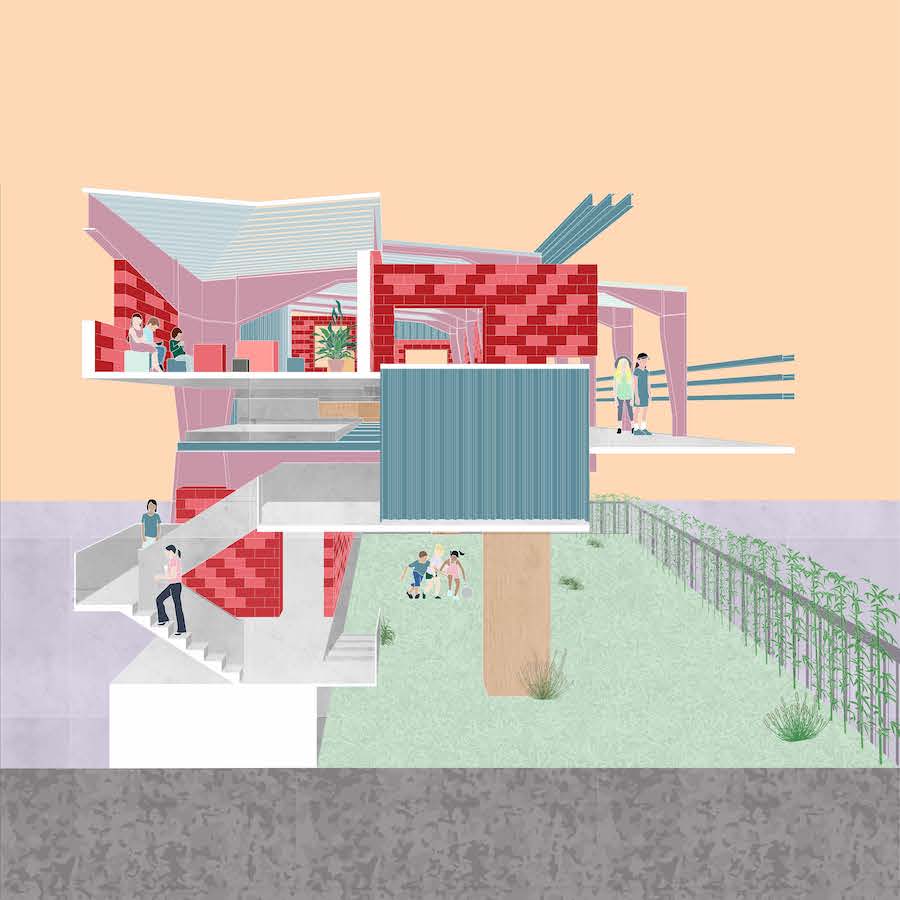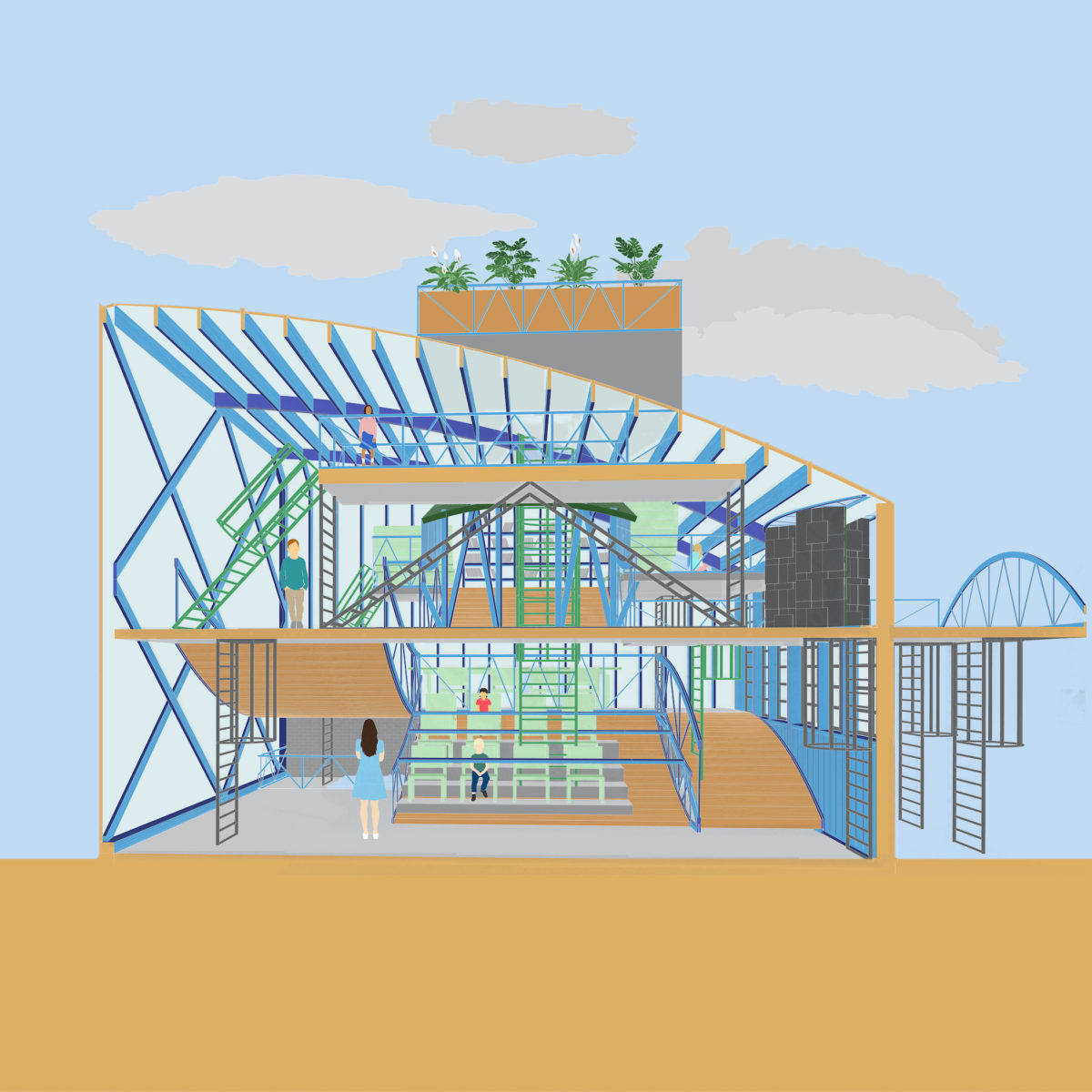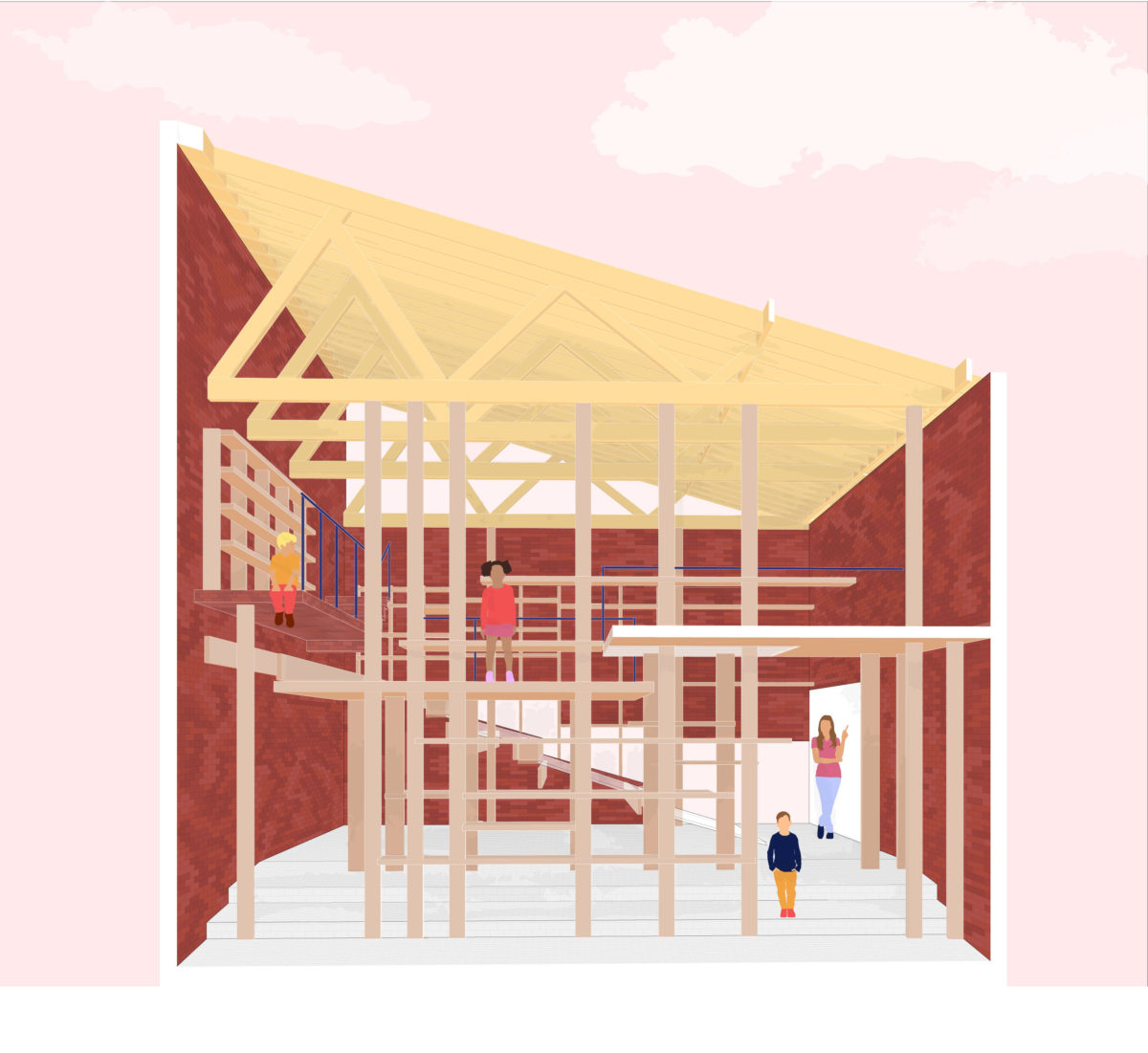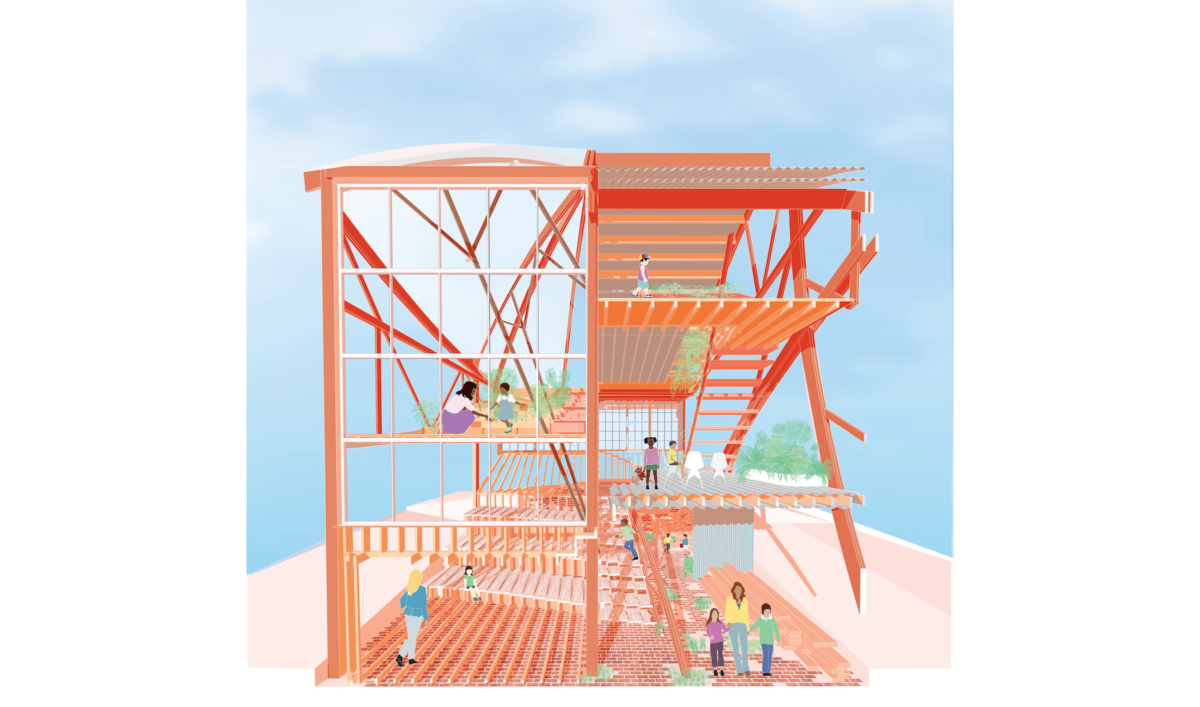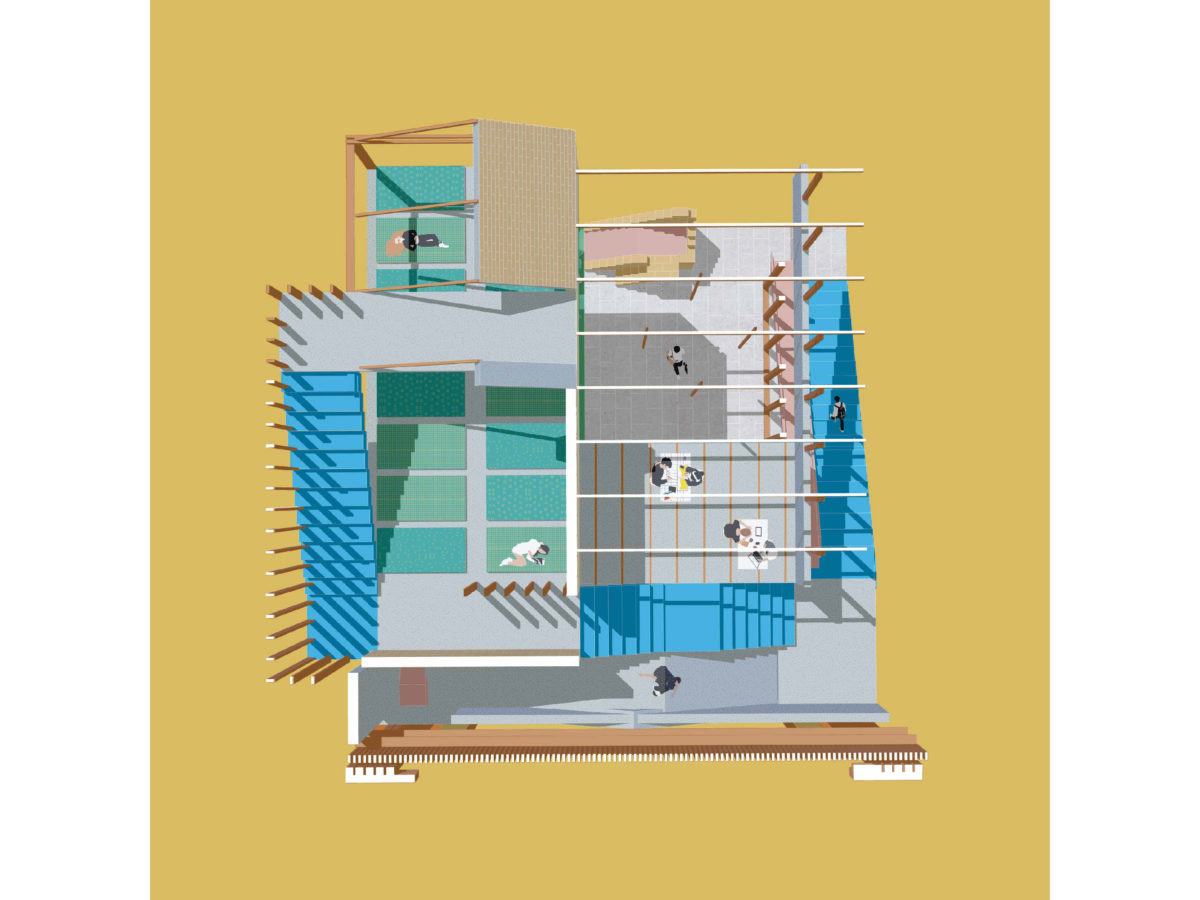The word ‘atlas’ has two meanings in this project’s context: an atlas is a book of maps which relates to the educational purpose of the school, and Atlas is a character from Greek mythology who holds up the weight of the sky. This project took an early interest in developing a weighty tectonic system: the megalithic concrete base supports a light steel and glass second floor, which in turn supports a massive, thick roof system. The concrete first floor engages the school’s idea of safety and security – it is a shelter where students should not feel exposed to danger. The second floor treats a school as a place to observe the outside world – everything is visible from there. Finally, the roof joins the two together; it is a heavy, imposing presence, designed to shelter those within from the outside world, but it has a high degree of transparency, so students can observe without feeling exposed.
